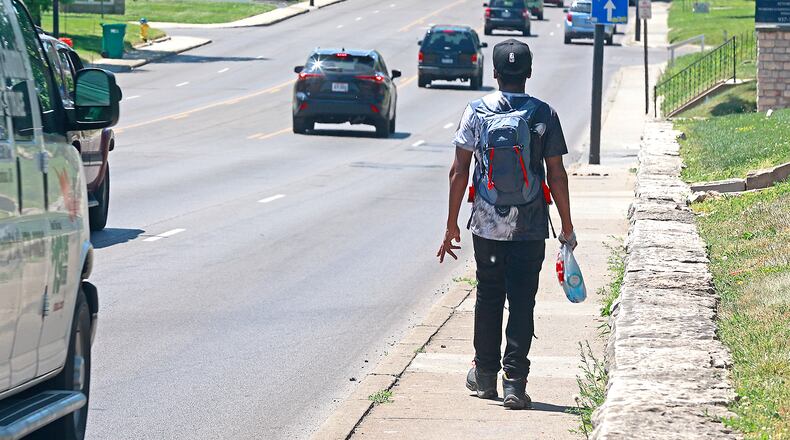Agresta said the plan focuses on making more areas suitable for different modes of active transportation.
“It’s just becoming more and more important to make sure that we’re accommodating our folks who walk and bike to get around, and we wanted to take a county-wide look at our community and see where we fall short ...” Agresta said.
According to the plan, active transportation emphasizes “human-powered modes of transportation” like walking, biking, strollers, electric-assist bikes and scooters.
The TCC and representatives from several city and county agencies got together from fall 2021 to spring 2023 to make a comprehensive plan in four phases, according to the plan. These phases were laying the foundation for the plan, involving the public and solidifying recommendations based on public feedback and project team analysis.
According to the 2020 census, about 10% of people have some form of physical disability or mobility impairment, translating to about 13,000 Clark County citizens.
Agresta said the plan took into account any new road construction has to comply with Americans with Disabilities Act regulations, like having truncated domes — bumps on sidewalks near the road — for those who are blind or visually impaired. He said this change and others that make it easier for people in wheelchairs or using other mobility aids would also make transportation easier for young families with strollers.
Speeding has been an issue nationwide, so the plan aims to aid in designing roadways that do not enable fast speeds, Agresta said. He said by having bike lanes and mid-block crosswalks, the instance of pedestrian crashes could be reduced.
“It’s not really fair for us to ask someone to walk half a mile out of their way to a single intersection; they often are just going to cross right there — technically jaywalk — so we tried to find some places where mid-block crosswalks make sense,” Agresta said.
According to the plan, pedestrian injuries and fatalities are most common in urban areas at night in the fall and winter. Bicylist and pedestrian deaths make up 14% of roadway fatalities in the state.
In 2021, pedestrian deaths reached the highest level in the last 40 years, according to the plan, and 55% of pedestrian crashes take place on arterial roadways, which make up only 8% of roadway mileage in Ohio.
Agresta said one area that could use improvements like mid-block crosswalks is East Main Street between Burnett Road and Belmont Avenue.
Credit: Transportation Coordinating Committee
Credit: Transportation Coordinating Committee
The plan asked for public input, receiving almost 500 responses. Survey participants indicated that most citizens walk and bike for recreation or exercise, but there is a growing desire among many to walk or bike as a form of transportation.
According to the plan, many respondents felt that a lack of suitable or safe infrastructure and “desirable” locations to walk or bike to created obstacles to engaging in these forms of transportation.
Areas identified by participants as needing improvements were North Bechtle Avenue, West and East Main Street by U.S. 40 and North Limestone Avenue. Bechtle is currently under construction to introduce sidewalks extending on both sides of the roadway from Hillcrest to the Walmart store location.
Springfield city commissioners discussed the project, which is funded by the city, at an April meeting. City Manager Bryan Heck said then that the sidewalks will “create more pedestrian connectivity for that corridor.”
The TCC plan outlined four goals: improve conditions for current pedestrians and cyclists, balance the level of service for cyclists and pedestrians, improve connection of active transportation users to community destinations and use active transportation as a tool for economic and community development.
Many can be achieved by implementing multi-use trails, filling in sidewalk gaps and using side paths, according to the plan.
Agresta said now that the TCC has raised awareness to the problem, he hopes that when cities or villages in the county are planning construction, they will look to the plan for guidance on introducing pedestrian safety.
Credit: Bill Lackey
Credit: Bill Lackey
About the Author

